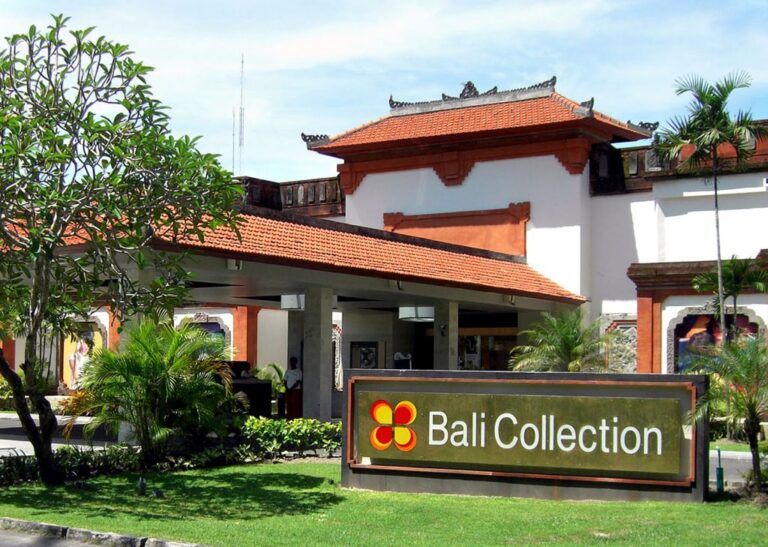There are two Balinese calendars and it’s fair to say that the Gregorian calendar is also used here in Bali.
That means you need to know which Balinese calendar you’re using and what it means in Balinese culture to be sure of what’s going on around you and to tie the dates to the Western calendar.
Our guide to the Balinese calendar systems will help you understand both the Saka Calendar and the Pawukon calendar and how they tie in with the Gregorian or Western calendar.
The Saka Calendar
The first of the two Balinese calendars is the Saka Calendar. This is a lunar calendar and that means it’s based around the lunar cycle.
It’s worth noting at this point, that this calendar is also sometimes called the “Sashi Calendar”.
It remains in sync with the lunar and solar cycles because this lunar calendar is modified using a pair of lunar days to each solar day in each 9-week cycle.
This unusual day is “ngunlatari” (this means “less one night” in Sanskrit.
A lunar year has 354-355 days which means it’s not as long as the standard Western calendar year of 365 days which is based on the solar year.
The reason the Saka calendar system doesn’t deviate from the solar year, which is what happens with the Islamic calendar which is also based on the lunar cycle, is that they add a bonus month called an intercalary month whenever the final day of the 7th month of this calendar would otherwise fall in the month that we know as December.
Months
The names of the months in the Saka Calendar are drawn from the old Balinese language (as opposed to Bahasa Indonesia) and from Sanskrit.
Each month of this Bali calendar begins a day after “Tilem” (the new moon) and is divided into a period of “waxing” as the moon grows greater in the sky.
Then after “Purnama” (the full moon), it moves into the period of “waning”.
The first half of the month and the second half of the month are fifteen days long each and they are numbered, from 1 to 15.
It’s worth noting that the first day of the year begins after Tilem in March.
Nyepi always falls on the first day of the month of Kadasa and all years in the Saka-era are counted from the date of Nyepi, to confuse matters a little.
The months are, in order, Kasa, Karo, Katiga, Kapat, Kalima, Kanem, Kapitu, Kawalu, Kasanga, Kadasa, Jyestha, and Sadha.
Years
Year numbers are easy to work out in the Saka Calendar as this Balinese calendar simply counts 78 years behind our own Gregorian calendar.
Thus, in 2024 as we go to press, it’s 1946 on the Saka Calendar. This figure isn’t arbitrary, the dating system aligns with the beginning of the Saka Era in India.
As far as we can tell, this Balinese calendar has been in use here in Bali since the 9th century AD. It would also have been used in Java at the same time but was replaced in the year 1633 in Java, by the Javanese Calendar. (And yes, that calendar is entirely different from the two used in Bali, today).
Important Days On The Saka Calendar
The most important days that the Balinese observe using this Bali calendar are:
Nyepi, the day of silence (which protects the island from evil spirits), which begins the year and is one of the most important religious ceremonies in Balinese culture. This is not, technically, Balinese New Year, though it is often treated as such.
Siva Ratri, which falls on the final day of the 7 month, Tilem Kepitu, and is dedicated to Shiva. This special calendar day is seen as a chance to meditate all night long.
24 ceremonial days – these are usually celebrated around the Purnama (mid-point of the month) each month

The Pawukon Calendar System
This calendar is markedly more confusing than the Saka. That’s because the Pawukon has no year numbers, it has only 210 days in its year and it uses cycles rather than weeks to determine the days.
Days
There are three cycles of days in this calendar and the name of the day depends on the cycle:
3 days: Pasah, Gunung Tegeh, Kajeng
This cycle is used to set the trading days between village markets.
5 days: Umanis, Paing, Pon, Wage, Keliwon
7 days: Redite (Sunday), Coma (Monday), Anggara (Tuesday), Buda (Wednesday), Wraspati (Thursday), Sukra (Friday) and Saniscara (Saturday)
There is also a 35-day cycle a “bulan” which serves as a month and there are six bulans in a Pawukan year.
To make life interesting, there are “special days” (usually religious days) that form at the intersection of cycles – so there is a special day every 15 days when the 3-day and 5-day cycle overlaps, then every 21 days for the 3-day and 7-day cycle, and another at the end of each bulan (35 days for the 5-day and 7-day cycles).
By the way, if you find this calendar a bit complicated, don’t worry – so do most Balinese people and while some can use it completely fluently, many locals have to look up dates on this calendar.
Balinese Birthdays
Every Balinese person uses a Gregorian date for their birthday which is celebrated just as we celebrate birthdays.
They also have a Pawukon date for their birthday and there is a small private ceremony where offerings are made on this date.
Balinese Special Occasions
There is a good day on the calendar for almost every activity from getting your hair cut to getting married and you will find that this often inspires every Balinese person that you know to do the same thing on the same day.
So, you might suddenly see everyone with shorter hair or get a dozen invitations to weddings on the same date!
Paper Calendars – A Vital Component Of Balinese Life
If you wonder how people make sense of using a Balinese calendar or two and the more universal Gregorian system, it’s actually quite simple.
They buy a Balinese calendar made of paper. These will have all the important events marked on them, the different days will be properly labelled, explanations of which beautiful offerings should be made and when, the days of the new moon and the full moon, etc.
Thus the two systems don’t need to be committed to memory (though every Balinese person knowns what Kuningan marks or Galungan celebrates, they may not know exactly when they fall in the complex system of the Balinese calendar) but daily activities can be planned around a simple physical calendar.
Of course, in 2024, many Balinese no longer use paper but will use an electronic app on their smartphones in its place. The principle is the same, though, and Balinese people rarely miss ceremonial days, rituals, celebrations, temple appointments, weddings, etc.
FAQs
What Calendar System Does Bali Use? What Is The Traditional Calendar In Bali?
There are two calendars in use here, the Saka and Pawukon calendar systems. They are both traditional and both relate to the Hindu faith practised on the island.
The first is based around the lunar cycle and the other is a unique 210-day system.
How Many Days Are In A Balinese Year?
Bali is on the planet Earth and an Earth year is always 365 (and a bit) days. It’s the time that it takes for the Earth to go round the sun, once. No matter which Balinese calendar you are using, the length of an actual year won’t change.
However, the Saka system has a 354/5 day year which is adjusted using an additional month, in some years, to help it match the solar year.
The Pawukon system, on the other hand, has 210 days in its year and this Balinese calendar is not adjusted to match other systems.
What Is The Balinese Pawukon Calendar?
This is a calendar which consists of 210 days to a year. It’s an important Balinese calendar for celebrating important life events or for setting the days for religious ceremonies but it is, otherwise, not used very much.
Local customs dictate its use for religious festivals, house blessings, etc. but Balinese people will use the Gregorian system to set most other dates.
What Are The 12 Months Of The Saka Calendar?
The months of the Saka Calendar are, in order, Kasa, Karo, Katiga, Kapat, Kalima, Kanem, Kapitu, Kawalu, Kasanga, Kadasa, Jyestha, and Sadha.
What Calendar Is Used In Indonesia?
It depends on where you are in the archipelago. Nearly everyone, including Balinese people, uses the Gregorian calendar as a unifying calendar to make it easy in daily life but most areas have their own unique systems too.
How Does The Balinese Calendar Differ From The Gregorian Calendar?
It depends on which Balinese calendar you’re referring to. The Saka has a year that is shorter than the Gregorian year and requires correcting every now and again with the addition of an extra month. However, the Saka year number is roughly the Gregorian year less 78.
The Pawukon Year, on the other hand, has nothing in common with the Gregorian Year and is only 210 days long. There are no year numbers on this Balinese calendar and thus, there’s no need to correct that aspect of its use.
Final Thoughts On The Balinese Calendar Vs The Gregorian Calendar
Bali’s calendar systems aren’t as complicated as they look at first glance and you don’t need to know either system to have a good time in Bali.
However, it can come in handy to know that the new moon and full moon affect daily life and the position of some Balinese ceremonial days.
The good news is that here at FINNS our weeks have seven days and we’re open on every single one of them all year round, except for Nyepi, so that you can enjoy the best Balinese sunset, in comfort at the world’s best beach club.













